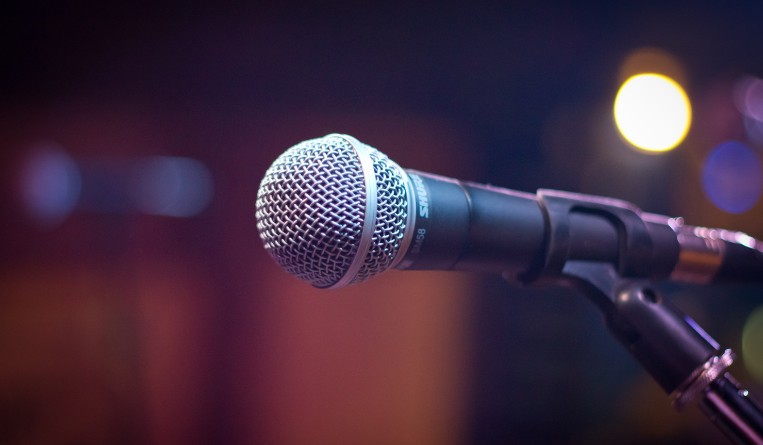The third amendment to the Copyright Law of the People’s Republic of China was adopted on November 11, 2020, and came into force on June 1, 2021 (the 2020 Copyright Law or the new copyright law). After 10 years’ revision, it has finally come to fruition. As an intellectual property lawyer who has been practiced copyright law in music industry for more than 20 years, I have been paying close attention to the progress of its revision. This paper evaluates its potential impacts on China’s music industry.
The new law has expanded the capacity of broadcasting rights, which covers the behaviours of network live broadcasting, regular broadcasting and real-time rebroadcasting on websites
In the 2010 Copyright Law, the right of broadcasting can only control three kinds of behaviours: wireless broadcasting, rebroadcasting of the wireless broadcast in a wired or wireless manner, and public communication or transmitting of the broadcast received. (See Item 11, Article 9 of the 2010 Copyright Law). It does not include the initial transmission in wired manner, such as the wired broadcast and the network broadcast. The 2020 Copyright Law adds technical means of “wired” transmission on the existing basis. (See Item 11, Article 9 of the 2020 Copyright Law). The revised broadcasting right covers all “non-interactive communication” behaviours, including those networks’ related non-interactive communication, which realizes a seamless connection with the right of communication via information network.
After the implementation of the 2020 Copyright Law, behaviours such as the live singing or playing background music by network anchors, regular broadcasting on the website and real-time rebroadcasting of concerts and TV variety shows on the website will be included in the protection of broadcasting rights. It changes the situation of original judicial practice of applying “other rights that should be enjoyed by copyright owners” to regulate the transmission of music by wire and non-interactive means.
Music right holders have legal grounds to receive remuneration for the subsequent dissemination of short videos, game pictures, variety shows, music videos (MV) and other audio-visual works, provided that there is no agreement or that the agreement is unclear in advance
The new law introduced the concept of “audio-visual works,” changing “cinematographic works and works created in a way similar to cinematography” to “cinematographic works, television play works, and other audio-visual works” in Item 6, Article 3. In addition, Article 17 of the new law adds a paragraph stipulating the ownership of the copyright of an audio-visual work, other than cinematographic works and television plays, shall be agreed upon by the parties. The copyright shall be enjoyed by the producer where there is no agreement or the agreement is unclear, but the author shall have the right of authorship and receiving remunerations. In comparison with film and television plays, the term "other audio-visual works" cover short videos, sports competition programs, game pictures, variety shows, music videos (MVs) and potential audio-visual forms created by future technology development. It is understood that the right to remuneration by music author should include the use of audio-visual in the process of subsequent dissemination. In order to distinguish it from the right to remuneration in the production phase of audio-visual works, this paper calls the remuneration in the process of subsequent dissemination “the right to secondary remuneration.” It is clear that the second reward right makes up for the deficiency of Article 15 of the 2010 Copyright Law. It overcomes the dilemma that the copyright of music stipulated in Article 15 is absorbed by the copyright of audio-visual works. If the music owner does not reach an agreement with the producer in the initial authorized production contract to recover the income in the process of dissemination, he or she cannot claim any rights on the subsequent dissemination. It is doubtless the authorization of audio-visual synchronization cannot cover the benefits that should be obtained from the use of music in the process of dissemination. The new law supplements the benefits that music rights holders should receive for the subsequent dissemination of audio-visual works.
The question at issue is who shall be the payer, the producer of audio-visual works or the disseminator? It is not clear from the legal provisions, and there are no supporting regulations or judicial interpretation at present. It is the author’s opinion that it should be a common obligation of both.
For example, in respect to the provision of large numbers of short music videos, game dynamic pictures and variety shows, a digital service platform not only needs to obtain the permission of the producer of the video, but also must pay for the music used in the video, unless the producer has made an agreement with the music right owners in a previous production contract. Another example is the large number of music videos used in karaoke halls: the music right holder has the right to receive remuneration from the operator for the use of KTV if such use is not covered in the production contract with the record company.
The new law expands the rights of record companies by granting the remuneration rights for performance and broadcasting of their sound recordings
The advent of the digital and internet era has caused the revenue of the traditional recording market – on which recording rights holders rely – to shrink dramatically in China. Record producers can no longer obtain significant income through the distribution of physical discs. After more than 10 years of appeals, the new law finally grants record producers the right to remuneration for the use of recordings in public broadcasting and performance.
The new law expands the source of income for record producers, which is undoubtedly worth cheering. The author worked at the International Federation of the Phonographic Industry (IFPI) in her early years in the industry. It is my understanding that the process of recording music is not a “sweat of the brow” kind of work. The technical means and level of the producer, and the taste and experience of art, fully reflect the originality of a piece. Sound recordings should be protected at the same level of musical works. However, China’s copyright law adopts the “author’s right” in the continental law system. A record belongs to the disseminator rather than the creator, while the record producer’s right is a neighbouring right. In comparison with the 13 items of property rights of authors of works, the producer of sound recordings only have four items of rights: the rights of reproduction, distribution, lease and information network dissemination. The two remuneration rights added by the new law for producers were actually made up for their absence and are dubbed “luxury goods.”
The 2020 Copyright Law has expanded broadcasting rights to include the means of communication via wired technology. Therefore, the scope of remuneration for broadcasting activities by record producers has also been expanded to include wire and wireless communication and broadcasting. Specific usage scenarios include radio stations, TV stations and internet radio stations playing sound recordings, and background music being played during the web live broadcast.
The behaviour of public broadcast via voice transmission equipment is illustrated as the mechanical performance/playing of sound recordings, including publicly transmitted sound discs, cassettes and video tapes by recording equipment. Examples of this include broadcasting music or shows to consumers in a hotel, restaurant, shopping mall or dance hall, as well as broadcasting music used by concert.
The act of broadcasting to the public through technical equipment that transmits sound is interpreted as a mechanical performance/broadcasting of sound recordings, which includes the use of recording equipment to publicly broadcast records, audio tapes and video tapes with performances. Examples include hotels, restaurants, shops, and dance halls broadcasting music for customers, as well as the musical accompaniment used in song and dance performances and concerts. In the 2010 Copyright Law, only songwriters have the right of performance. After the implementation of the 2020 Copyright Law, record producers have the right to receive remuneration at the same time.
It is worth noting that the copyright law applies a statutory license to the use of musical works (lyrics and composition) in broadcasting by radio and television station. However, the payment for the use of sound recordings in broadcasting stipulated in the 2020 copyright law does not belong to the statutory license. The right holder enjoys the right to remuneration without the basis of license. Due to the different rights basis, it directly affects the practice of fee collection, such as who will be the collecting party, the formulation and implementation of the remuneration standard. All of these are inseparable from the collective management organizations (CMOs), which I will analyze below.
The scope of activities of copyright CMOs will be greatly expanded, and the sources of fees will continue to increase
The Music Copyright Society of China (MCSC) is a collective management organization manage the rights for songwriters. In the past 10 years, MCSC has been working on the statutory licensing of broadcasting rights and the licensing on digital service platforms. The expansion of broadcasting rights in the new copyright law and the right to get a second remuneration for the use of music in other audio-visual works will all become the new collecting source of MCSC.
The China Audio Video Copyright Association (CAVCA) is a CMO that manages the rights of audio-visual owners. In the past, restricted by the types of rights of sound recordings, its main activities were limited to the collection of fees for karaoke use of music videos. The 2020 Copyright Law grants the remuneration rights to sound recording owners for the use in broadcasting and performances. The rights are difficult to exercise for right holders, which are suitable for unified exercise through collective management. Therefore, the scope of activities of CAVCA will greatly expand and the number of members will increase gradually. As for the fee standard and the method of collection, it is waiting for the implementation rules of the law or the supporting amendments to the collective management regulations to be clear.
It is worth noting that the new law makes it clear that users can solve the disputes about royalty standards through administrative departments and courts, which makes up for the gaps in the existing law and provides a legal basis for standardizing the collection behaviour of CMOs in China.
Consolidating the power of the global music industry, China’s music industry will usher in a new prosperity
The 2020 Copyright Law improves the legal status of the right holders, and the music industry welcome the changes. The development of China’s music market has attracted more and more attention from international counterparts in recent years. According to the global music report released by IFPI, the scale of China’s music record market continued to expand rapidly in 2020, ranking seventh in the global music market. It is believed that with the implementation of the new copyright law, music rights holders will get more income and attract more international music rights holders to participate in this market. In fact, since the promulgation of the new law, the author has been receiving business consultation from some overseas copyright companies. It is doubtless that China’s music industry will usher in a new round of development under the protection of the new law.








